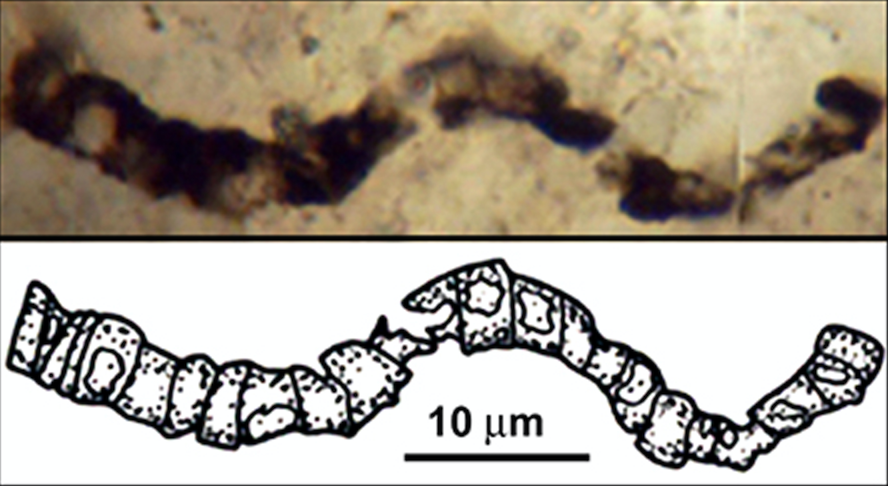-
Life on Earth Arose Early and Diversified Rapidly
January 18, 2018 / Posted by: Miki Huynh
SIMS analysis of Primaevifilum amoenum, an Apex chert microfossil found in Western Australia, is interpreted to be a methane-consuming γ-Proteobacterium. Source: J.W. Schopf, UCLA.J. William Schopf, professor of paleobiology at the University of California, Los Angeles (UCLA), with scientists at UCLA and the NASA Astrobiology Institute (NAI) team at the University of Wisconsin-Madison, teamed up with John Valley, professor of geoscience at UW-Madison and member of NAI’s UW-Madison team, to analyze eleven species of microscopic fossils first discovered in Western Australia in 1993. Their analysis revealed a diversity of microbes that place the possible emergence of life on Earth at around 4 billion years ago—earlier than previously assumed.
The study, “SIMS analyses of the oldest known assemblage of microfossils document their taxon-correlated carbon isotope compositions” is published in the Proceedings of the National Academy of Sciences.
The results from the secondary ion mass spectrometry (SIMS) analysis of the microfossils, combined with earlier findings from the UCLA/UW-Madison team, show that microbial photosynthesizers, sulfate-reducers, and methane producing and consuming microorganisms existed more than 3,400 million years ago, only a billion years after Earth’s formation. The diversity and present-day cellular complexity of these discovered groups of microbes suggest that life on Earth may have then started 500 years earlier.
Source: [PNAS (via UCLA and UW-Madison)]
- The NASA Astrobiology Institute Concludes Its 20-year Tenure
- Global Geomorphologic Map of Titan
- Molecular Cousins Discovered on Titan
- Interdisciplinary Consortia for Astrobiology Research (ICAR)
- The NASA Astrobiology Science Forum Talks Now on YouTube
- The NASA Astrobiology Science Forum: The Origin, Evolution, Distribution and Future of Astrobiology
- Alternative Earths
- Drilling for Rock-Powered Life
- Imagining a Living Universe
- Workshops Without Walls: Astrovirology